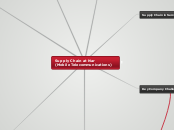Supply Chain at Nar (Mobile Telecommunications)
About Nar
Established in 2007 and the third mobile communications operator functionning in Azerbaijan
2 million customers
635 employees
80% of geographical penetration
Official sponsor of the 1st European Olimpic Games
Supply Chain in Service Industry
Some nuiances of Service Sector
Services are intangible
Services are heterogeneous
Services are simultaneously produced and consumed
Services are perishable
Key Success Factors for Service Sector
Matching the supply with demand
Minimisation of waiting time for customers
Minimisation of idle time for resources
Maximisation of performance for employees and other resources
Maximisation of experience for customers
Trends in Service Supply Chain
Services are increasingly about the the management and supply of information
Information can replace inventory
Services are increasingly outsources, as organizations focus on core activities
The combination of automation and outsourcing has enabled the development of virtual service organizations and networks
Key Company Challenges at Nar
Customer Centricity
Time to Market
Efficiency
Capabilities
Key Supply Chain Challenges at Nar
Internal Customer (employee) and External Customer (vendor) Satisfaction
Proactive and Speedy Operations
Efficiency and Effectiveness of Supply Chain. SIMPLIFICATION
Human Capital and Corporte Culture

Conclusion
Customer Experience and Telecommunications
Customer experience is the internal and subjective response customers have to any direct or indirect contact with a company.
Customer experience encompasses every aspect of a company’s offering
The quality of customer care
Advertising & packaging
Product and service features
Ease of use
Reliability
A successful brand shapes customers’ experiences by embedding the fundamental value proposition in offerings’ every feature
The brand ethos at Nar is 'connecting people to people and people to the world. Being generous, full of life and inspiring.' It informs customers about the company's sensitivity toward customer satisfaction

The difference between CEM and CRM

What is Employee Experience?
It is a life within the organization encompassing those with managers, colleagues and the physical environment but also including those with customers. 89% of negative customer experience comes from customer service employees.
Increased employee engagement has resulted in 15% increase in Customer Satisfaction and 21% increase in Revenues at Nar
Main Functions of Supply Chain Department @ Nar

High level supply chain structure in Telecoms
Procurement
Logistics
Responsible for the movement of materials through the Supply chain
Main functions of Logistics
Transportation
Warehouse Management
3rd and 4th Party Logistics
Reverse Logistics
Information Systems and Supply Chain
ERP
Best business practices - Incorporation of processes evaluated as the best in the world
Comprehensive- Integrating as many business computing func-tions as possible, with a single database
Modular- An open system architecture allowing incorporation of those modules needed for the organization
External linkage - Capable of linking external organizations, especially within supply chains
CRM
CRM is the management of the relationships between the providing organization and its customers.
